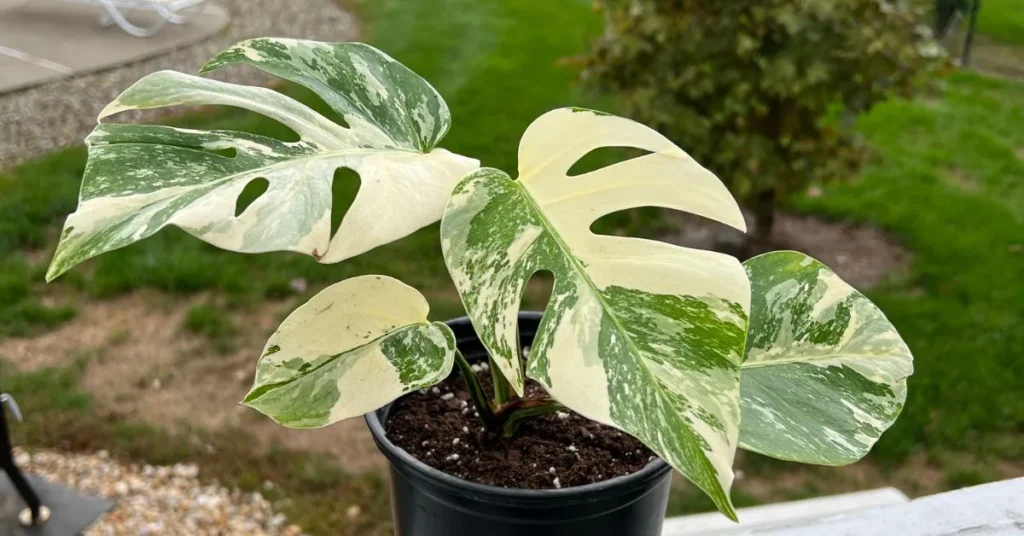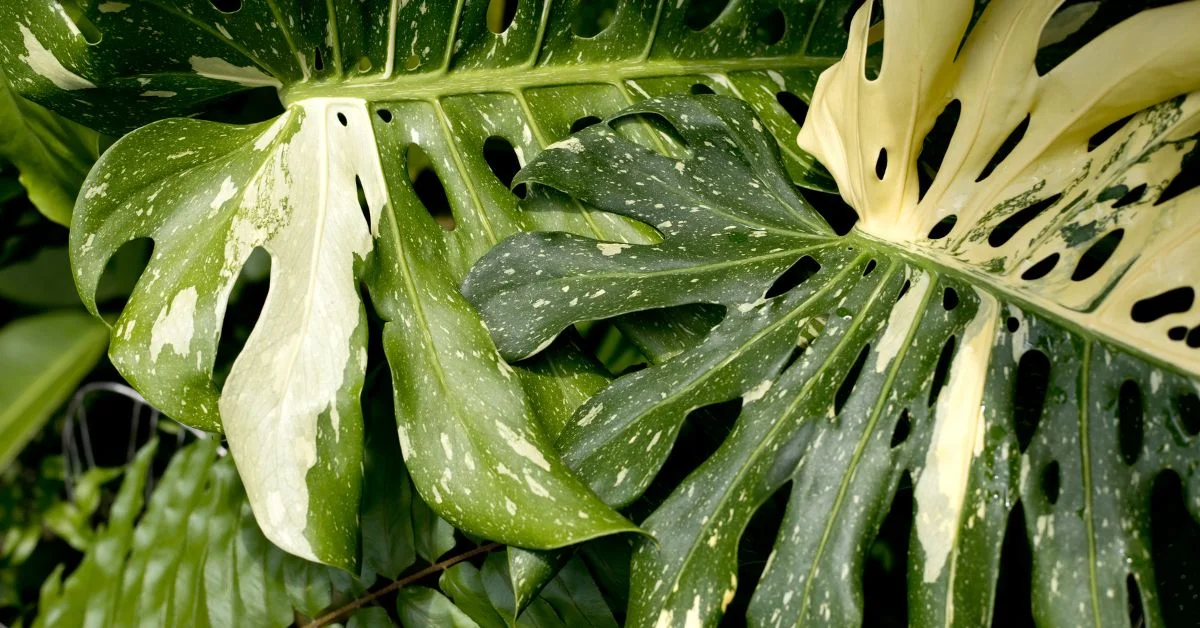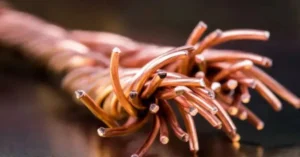Plant aficionados all over the globe have taken a shine to the Monstera Albo, a beautiful and very desirable variant of the legendary Monstera Deliciosa. The huge, glossy leaves and distinctive white variegation of this plant make it a show-stopper that will complement any decor. Knowing how to take care of a Monstera Albo is crucial to keeping it healthy and looking its best, regardless of your level of experience with plant parenting.
From its specific care needs to how to propagate it, this guide has you covered for the Monstera Albo. The fascinating life of this beautiful houseplant is about to unfold before your eyes.
What is a Monstera Albo?
Rare and stunning, the Monstera Albo is a variant of the Monstera Deliciosa. Its beautiful white marbling stands out against the verdant foliage, giving the plant its distinctive appearance. This variation is a result of a genetic mutation; as a result, it is more rare and costly than regular Monstera.
Monstera Albo, like its green version, needs regular watering and light, but its distinctive variegation might make it more delicate to some environments. So, it’s not for the faint of heart, but with the right care, it can become a show-stopping centerpiece for any garden.
Characteristics of Monstera Albo
Among Monstera Albo’s traits, variegated leaves stand out. The Albo differs from other species of verdant foliage in that its leaves are speckled with creamy white spots rather than pure green. These leaves are enormous and showy as the plant gets older, and they frequently get deep splits and holes.
Size and Growth: Monstera Albos are considered slow growers compared to other types of Monsteras, especially in lower light conditions. They can grow several feet tall if given the right environment, but their growth rate can be affected by the amount of sunlight and care they receive.
Leaf Appearance: The white variegation is the result of a lack of chlorophyll in certain areas of the leaf. This gives the leaves a marble-like or patchy appearance, which makes them incredibly desirable among collectors.
Rarity: Monstera Albos are not as commonly found in stores as their green relatives, making them highly sought-after. This rarity is one reason they often come with a high price tag.
| Monstera Albo Care Guide | |
|---|---|
| Plant Type | Monstera Albo (Variegated Monstera Deliciosa) |
| Light Requirements | Bright, indirect light. Avoid direct sunlight as it can scorch the white variegation. |
| Watering | Water when the top 1-2 inches of soil are dry. Ensure good drainage to prevent root rot. |
| Temperature | Ideal temperature range: 65°F to 85°F (18°C – 29°C). Avoid drafts and sudden temperature changes. |
| Humidity | Prefers high humidity. Use a humidity tray or mist leaves if you live in a dry climate. |
| Fertilizing | Feed during the growing season (spring and summer) with balanced, water-soluble fertilizer. Reduce feeding in winter. |
| Growth Rate | Slow grower, especially in lower light conditions. Can grow several feet tall under optimal conditions. |
| Propagation Method | Propagate by stem cuttings with at least one leaf and node. Root in water before transferring to soil. |
| Common Problems |
|
| Toxicity | Toxic to pets (cats, dogs, etc.) if ingested. Keep out of reach of animals. |
How to Care for Monstera Albo
Light Requirements
Monstera albo, like other Monsteras, does best in indirect, strong light. The white spots on variegated leaves can burn or fade if exposed to direct sunlight. The growth of its lovely variegation, meanwhile, can be stunted by an absence of light. If you want your Monstera Albo to thrive, choose an area where it can get indirect sunshine all day long or near a window that lets in filtered light.
Watering Tips
To ensure that Monstera Albo plants dry out in between waterings, wait until the soil is at least one or two inches deep before adding more water. One typical cause of root rot is overwatering. Make sure to let any extra water drain out of the pot before watering again to avoid waterlogging. You should water your Monstera Albo more frequently in the summer but less frequently in the winter.
Temperature and Humidity
The ideal temperature range for Monstera Albos is 65–85 degrees Fahrenheit (18–29 degrees Celsius). Even if they’re not completely temperature sensitive, you should still keep them away from drafts and places where the weather changes quickly. Monstera albo is a tropical plant that needs a lot of moisture to survive, so if you live in a dry area, you might want to think about using a humidifier, misting the leaves, or utilizing a humidity tray.
Fertilizing Monstera Albo
During the spring and summer, when Monstera Albo is actively developing, give it a balanced, water-soluble fertilizer. When the plant is dormant in the fall and winter, you can cut back on fertilizer. Avoid damaging the plant or creating nutritional imbalances by not fertilizing it too much.

Common Problems and How to Solve Them
Yellowing Leaves
Yellow leaves can be a sign of overwatering or too much direct sunlight. Check your watering schedule and make sure the plant isn’t getting too much sun exposure, especially on the white areas of the leaves.
Browning Edges
If the edges of the leaves begin to brown, it could indicate low humidity or underwatering. Try increasing the humidity levels around the plant or adjusting your watering routine.
Slow Growth
A Monstera Albo’s growth rate can be slow, especially if it’s not receiving enough light. Ensure the plant is placed in a bright spot and adjust care as needed to boost growth.
How to Propagate Monstera Albo
Monstera Albo plants can be propagated through stem cuttings. Here’s a simple step-by-step guide:
- Choose a Healthy Cutting: Select a stem with at least one leaf and one node (the small bump on the stem where roots can grow).
- Make the Cut: Using clean, sharp scissors or pruning shears, cut just below the node.
- Rooting in Water: Place the cutting in a jar of water, ensuring the node is submerged but the leaf isn’t. Change the water every few days.
- Planting in Soil: Once the roots are around 2-3 inches long, transfer the cutting to a pot with well-draining soil.
Why Is Monstera Albo So Expensive?
The scarcity of Monstera Albo is the main reason for its high valuation. It is far more difficult to cultivate variegated plants than solid-colored ones, and due to its peculiar mutation, Monstera Albo is not widely available. Demand and expense are further increased since fewer plants are successfully propagated due to the plant’s specialized care requirements, particularly regarding light and humidity.

Conclusion
If you’re looking for a show-stopping houseplant, go no further than the Monstera Albo. Although it may be more demanding in terms of maintenance than other Monstera kinds, the plant’s enormous size and striking white variegation more than justify the trouble. The perfect circumstances for a Monstera Albo, including light, humidity, and watering, will let it to grow and provide grace and beauty to your house.
Have you decided to welcome a Monstera Albo into your house? Pick a healthy plant and give it the TLC it needs by following our advice. In return, you will get an exquisite, unique natural artifact to cherish for all time.
Frequently Asked Questions
1. How often should I water my Monstera Albo?
Water your Monstera Albo when the top 1-2 inches of soil are dry. Be sure not to overwater, as this can lead to root rot.
2. Can I grow Monstera Albo in low light?
While Monstera Albo can survive in low light, it thrives in bright, indirect light. Low light can hinder the development of variegation.
3. Why are the white patches on my Monstera Albo turning yellow?
Yellowing white patches can be a sign of too much direct sunlight or overwatering. Adjust its care routine accordingly to prevent further damage.
4. Is Monstera Albo toxic to pets?
Yes, Monstera Albo is toxic to pets if ingested. Keep it out of reach of cats, dogs, and other animals.
For more information, click here.









